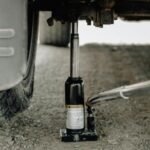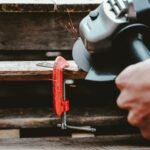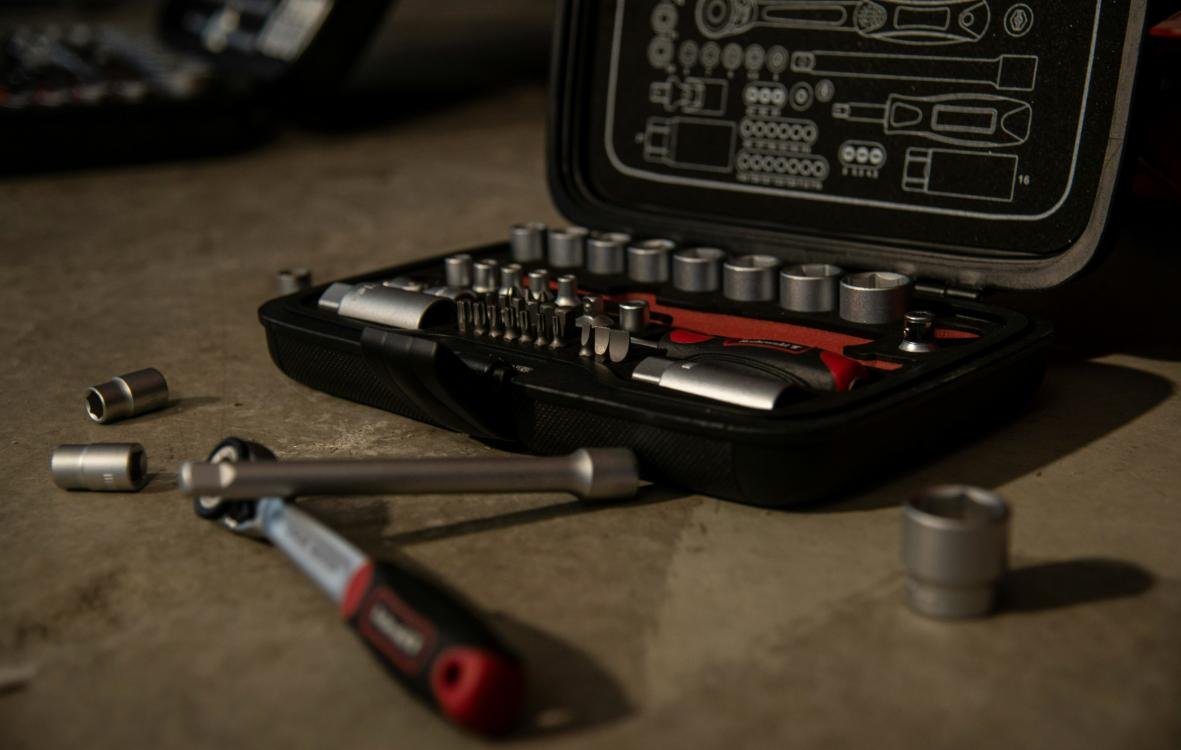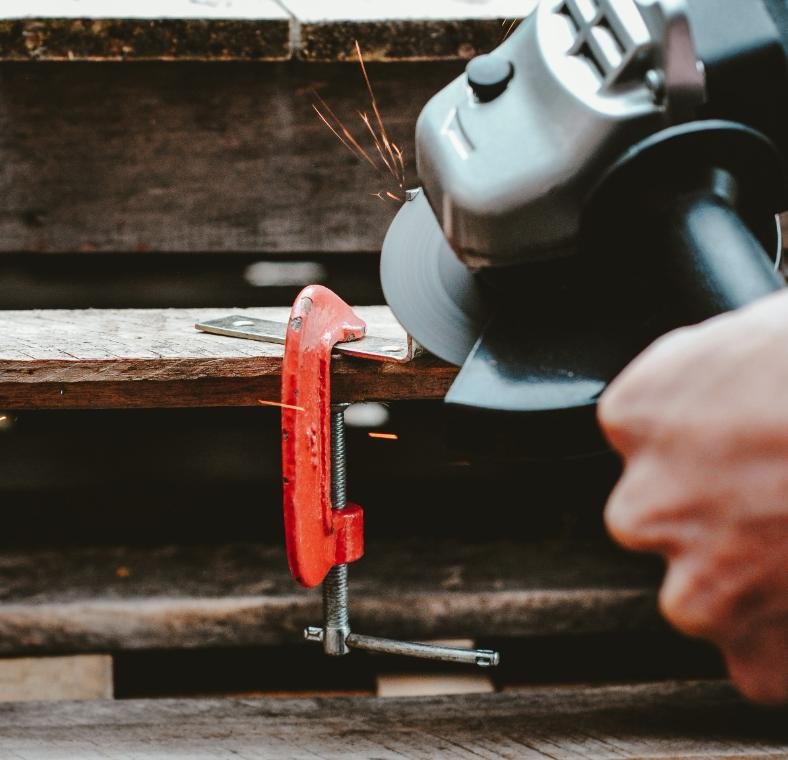Understanding Impact Wrenches
Impact wrenches are powerful tools designed to deliver high torque output with minimal exertion from the user. They are commonly used in automotive and construction applications, where the need for efficiently tightening or loosening fasteners is paramount. Unlike standard wrenches, impact wrenches utilize a mechanism that generates a series of rapid rotational impacts, allowing the user to drive bolts or nuts with greater ease.
There are primarily two types of impact wrenches: electric and pneumatic. Electric impact wrenches operate on batteries or through a power outlet, making them suitable for use in enclosed spaces or for tasks requiring portability. They provide consistent power delivery and are often quieter than their pneumatic counterparts. Pneumatic impact wrenches, on the other hand, are powered by compressed air and are typically found in professional settings such as auto repair shops and industrial workplaces. These wrenches offer superior torque output, allowing for efficient handling of stubborn bolts, but they require an air compressor, which limits their portability.
One of the main advantages of using an impact wrench over a standard wrench is the efficiency with which it can operate. The rapid bursts of torque not only reduce the physical effort required from the operator but also minimize the risk of stripping fasteners. This efficiency is particularly beneficial in high-production environments, where speed and reliability are critical. Additionally, the enhanced power of impact wrenches makes them ideal for tackling rusted or over-tightened bolts that could pose challenges with conventional wrenches.
In summary, the impact wrench is an indispensable tool in many mechanical and construction applications, offering unique functionality through both electric and pneumatic models. Understanding the differences and advantages of these tools is essential for selecting the right equipment for a project.
The Role of Sockets in Impact Wrenches
Sockets play a crucial role in the functionality and performance of impact wrenches, as they are the direct interface between the tool and the fasteners being manipulated. These attachments are designed to transmit the high torque generated by impact wrenches effectively. However, not all sockets are created equal; there are significant differences between standard sockets and impact sockets that should be understood. Regular sockets may not withstand the heavy-duty requirements of an impact wrench, leading to potential damage or failure.
Impact sockets are specifically designed to absorb the intense forces generated by impact tools. Typically made from higher-grade materials such as chrome-molybdenum steel, they are engineered to handle the stress without cracking or shattering. The impact sockets also feature a thicker wall compared to standard sockets, offering increased durability and resilience. Another important aspect is the finish; many impact sockets come in a black oxide or phosphate finish, which helps resist corrosion better than chrome-plated sockets often used for non-impact applications.
The common sizes of impact sockets typically range from 1/4 inch up to 1 inch or larger. It is essential to select the appropriate size socket for the specific job to ensure optimal performance and effectiveness. Choosing the right size minimizes the risk of stripping or damaging the fastener while maximizing the torque transfer. Maintaining a proper fit is vital; using sockets that are too large or small can lead to less efficient energy transfer and potential injury.
In conclusion, utilizing the correct type of socket with your impact wrench is fundamental for both the integrity of the tool and the safety of the user. Understanding the distinctions between impact sockets and regular sockets is paramount in ensuring efficient and effective use of impact wrenches for various applications.
Differences Between Regular Sockets and Impact Sockets
The primary distinction between regular sockets and impact sockets lies in their material composition and design, which directly influence their performance and durability. Regular sockets are typically constructed from chrome-plated steel, while impact sockets are made from tougher materials, such as chromium-molybdenum or chromium-vanadium steel. This robust composition allows impact sockets to withstand the high torque generated by impact wrenches without deforming or breaking.
In terms of strength, impact sockets are designed to endure the intense force and shock produced during heavy-duty applications. Unlike regular sockets, which may crack or splinter under high-stress conditions, impact sockets are engineered to absorb and distribute the load, providing greater safety and efficiency in use. The increased wall thickness in impact sockets also contributes to their durability, enabling them to take on more demanding tasks.
The finish of these sockets further differentiates them: impact sockets typically have a non-chrome, black oxide coating or are left unfinished. This design reduces the likelihood of flaking, which can occur with chrome finishes under rigorous use. Additionally, the non-reflective surface helps prevent glare, enhancing visibility during operation.
Weaponry performance also diverges between the two types. While regular sockets are suitable for light-duty projects with hand tools, impact sockets excel in scenarios where torque requirements are high, such as automotive or construction applications. Users should bear in mind that utilizing regular sockets with impact wrenches can lead to unsafe conditions, as they are not built to handle the sudden shock and force transmitted by these powerful tools. Therefore, selecting the appropriate socket is crucial for achieving optimal results while ensuring user safety.
Can You Use Regular Sockets with Impact Wrenches?
Using regular sockets with impact wrenches raises questions about safety and equipment longevity. Impact wrenches are designed to deliver high torque output and rapid rotational force, making them ideal for loosening and tightening stubborn fasteners. However, standard sockets are not built to withstand such intense forces, which can lead to significant risks.
One of the primary concerns when using regular sockets with impact wrenches is the potential for damage to the socket itself. Standard sockets generally lack the additional materials and construction methods used in impact-rated sockets that allow them to endure high torque. As a result, regular sockets may crack or break under the strain, posing a risk of injury to the user due to flying debris.
Moreover, utilizing regular sockets with an impact wrench can also affect the tool’s performance. The socket may slip or fail to engage properly with the fastener, leading to inefficiency and frustrating work experiences. In some cases, a damaged socket can cause unintended stripping of fastener heads, making the fasteners harder to remove in the future.
Experts typically recommend using impact sockets for any application involving an impact wrench. Impact sockets are specifically designed to handle the intense forces imposed by these tools and are more durable, allowing for reliable performance. They are manufactured from materials that provide increased resistance to wear and tear, ensuring they maintain their integrity even under high-stress conditions.
In summary, while regular sockets may seem convenient for quick jobs, using them with impact wrenches is not advisable due to the associated risks of damage and safety hazards. For optimal performance and longevity of both your sockets and impact wrench, it is best to invest in the appropriate equipment specifically designed for such tasks.
Consequences of Using Regular Sockets
The utilization of regular sockets with an impact wrench can pose significant risks, both to the user and the tools involved. Impact wrenches deliver high torque levels in quick bursts, which can create excessive force on standard sockets not designed for such applications. This mismatch can lead to the breakage of sockets, as their structures are often unable to withstand the intense impacts that an impact wrench generates.
One of the primary concerns when using inappropriate sockets is personal safety. A regular socket that fractures during operation can become a projectile, posing a direct hazard to the user and those nearby. This not only increases the risk of injury but also raises the potential for liability issues should an accident occur. Moreover, the resulting damage from using subpar sockets can lead to injury that may require extensive medical attention, impacting the user’s ability to work and resulting in additional financial burdens.
Further, employing regular sockets with impact tools can negatively affect the overall performance of the wrench itself. Such practices can lead to inefficiencies during tasks, forcing the tool to work harder without yielding the desired outcomes. Over time, this strain can cause wear and tear on the impact wrench, diminishing its lifespan and performance capabilities. The financial implications of repair or replacement can be substantial, adding to the cost of a project or ongoing maintenance.
In summary, using regular sockets with an impact wrench is ill-advised due to the potential for breakage, user injury, and reduced tool effectiveness. It is imperative to use sockets specifically rated for impact tools to ensure safety, enhance performance, and minimize long-term costs associated with tool damage.
Best Practices for Using Impact Wrenches
Impact wrenches are powerful tools that provide significant torque for various tasks, ranging from tire changes to heavy-duty assembly work. To use these tools effectively and safely, it is essential to follow certain best practices.
First, when attaching sockets to an impact wrench, ensure that the socket’s drive size matches that of the wrench. Most impact wrenches operate on a square drive, and using mismatched sizes can lead to damage and reduced performance. Additionally, always ensure the socket is fully seated on the anvil to prevent slippage during operation. Using impact-rated sockets is also crucial, as these are specifically designed to withstand the forces generated by an impact tool. Standard sockets may crack or break under such stress, posing safety hazards.
Maintenance plays a vital role in the longevity of impact wrenches. Regularly inspecting the tool for signs of wear or damage is recommended. This includes checking the electrical components, air lines (for pneumatic models), and the drive mechanism. Keeping the tool clean and lubricated can help maintain efficiency during operation. Follow the manufacturer’s guidelines for maintenance schedules to ensure optimal performance.
When selecting sockets for use with impact wrenches, consider materials that enhance durability, such as chrome molybdenum or chrome vanadium steel. These materials are more resilient against wear and tear, making them ideal for heavy use. Furthermore, it’s advisable to choose sockets that fit the fasteners snugly to avoid rounding off edges.
In conclusion, by adhering to these best practices—ensuring correct socket attachment, performing regular maintenance, and selecting the appropriate materials—you can maximize the performance and lifespan of your impact wrench, contributing to safer and more efficient work outcomes.
Recommendations for Socket Selection
When selecting sockets for use with an impact wrench, several crucial factors come into play to ensure that the tools function effectively and safely. The first consideration is socket size; it is essential to choose the correct size that aligns with the fasteners you will be working on. Impact wrenches typically require sockets that fit snugly around the nut or bolt to prevent slippage and potential damage.
The next significant factor is the type of socket. It is vital to use impact sockets specifically designed for impact wrenches rather than regular sockets. Impact sockets are made from thicker, more durable materials, allowing them to withstand the high torque generated by impact wrenches. Regular sockets may crack or shatter under this stress, posing safety risks and reducing efficiency. Therefore, always opt for impact-grade sockets when operating an impact wrench.
Quality also plays an integral role in socket selection. Investing in high-quality impact sockets ensures not only durability but also better performance. Quality sockets are less likely to deform or wear out quickly, providing a long-term solution for your tool needs. Brands often indicate the strength and reliability of their products, so looking for reputable manufacturers is advisable.
Lastly, compatibility with specific impact wrenches should be evaluated. Different impact wrenches may have unique specifications regarding their drive size and power. It is imperative to choose sockets that match these specifications to avoid performance issues. By following these recommendations and selecting the right impact sockets, users can enhance their experience and achieve optimal results when using an impact wrench.
When to Consider Alternative Solutions
While impact wrenches are highly effective for significant tasks such as loosening stubborn bolts or lug nuts, there are scenarios where conventional methods or alternative tools may be more suitable. For instance, working with delicate materials or precision components often requires a gentler touch than an impact wrench can provide. In these instances, using a standard ratchet and socket set might be a better choice to prevent damage to parts.
Another situation where alternative solutions come into play is when working in confined spaces. Impact wrenches, particularly those that are larger or high-powered, can be cumbersome. In such cases, a compact torque wrench or a manual ratchet may offer the necessary control without the risk of scraping adjacent surfaces or components. Furthermore, for light-duty applications that involve fasteners with lower torque specifications, a basic hand tool set suffices, affording users more dexterity and precision.
In addition, it’s important to consider the experience level of the user. For beginners or individuals unfamiliar with the operation of an impact wrench, incorrect usage could lead to stripped bolts or uneven torque. Here, conventional tools such as a torque wrench can ensure that fasteners are tightened to the appropriate specifications, reducing the likelihood of damage. Consulting professionals for particularly challenging mechanical tasks is also advisable. Such expertise can save time and prevent potential pitfalls that arise from ill-informed attempts at DIY fixes.
In summary, while impact wrenches provide unparalleled efficiency for heavy-duty tasks, there are circumstances where opting for traditional tools or seeking professional assistance is the prudent approach. Evaluating the specific needs of the project will foster better outcomes and preserve the integrity of both the tools and materials involved.
Conclusion: The Safe Way Forward
In the course of our exploration regarding the use of regular sockets with impact wrenches, several crucial points have emerged. Firstly, it is vital to understand that impact wrenches generate significantly higher torque compared to standard hand tools. This characteristic necessitates the use of specific impact-rated sockets that can withstand the immense stress and forces exerted during operation. Regular sockets, designed for use with traditional tools, may not endure the same level of strain, leading to potential failures, such as cracking or breaking.
Secondly, opting for the correct sockets not only ensures the longevity of the tools but also enhances safety in the workplace. Using inappropriate sockets can result in injury, as fractured components can cause flying debris. Therefore, it is imperative to utilize impact sockets that are specifically engineered to accommodate the demands of an impact wrench, promoting both performance and safety.
Additionally, investing in high-quality impact-rated sockets can lead to improved efficiency in various projects. These sockets are typically designed with thicker walls and materials that better handle the torque, enhancing the effectiveness of your impact wrench during heavy-duty tasks. This choice ensures that you achieve the desired results without compromising safety or the integrity of the equipment.
In light of the information presented, it becomes clear that using the appropriate sockets with impact wrenches is not merely a suggestion but a requirement. Ensuring that you have the right tools for the job will facilitate a safer work environment and promote effective project completion. Ultimately, making informed decisions in tool selection is paramount for both safety and efficiency. Prioritize investing in suitable impact sockets, and you will safeguard both your tools and yourself during demanding tasks.







